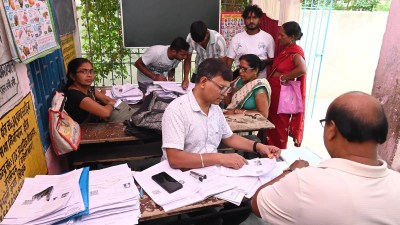Punjabis, eat heartily, but watch that heart
Think of a Punjabi and you have images of their basic, uncomplicated, rustic food, which seems to be an extension of their personalities.

Think of a Punjabi and you have images of their basic, uncomplicated, rustic food, which seems to be an extension of their personalities. Sarson ka saag, makki ki roti, sugar nd dollops of butter served with lassi would be a give away for any Punjabi. In fact, there is a lot more to Punjabi food. The daily meal is an elaborate affair with a combination of paranthas, daal, chhole, dahi, butter chicken, rogan josh and seasonal vegetables tempered in desi ghee. And what follows is sumptuous dessert like gajar ka halwa, kheer, phirni, rabri or gajjak.
Punjabi cuisine has been influenced by the cuisine of northwest frontier through the Mughal invasion. The clay oven preparations (tandoori), and the curry came from the Mughals. Milk is also an integral part of the Punjabi diet. Various milk products add to the variety and a part of the daily diet. Dahi, lassi, paneer, cream, ghee and butter are inseparable parts of Punjabi cuisine, which cater to the culture’s inherent need for energy dense foods.
Nutritionally speaking, constituents of traditional Punjabi diets are sound. They comprise a wide variety of whole grains, lentils, greens, seasonal vegetables, dairy, nuts and dried fruits. They are not high on harmful trans-fats. However, with rapid mechanization and urbanization of the Punjabi population, these eating habits have begun to cause an imbalance in energy equations and obesity is fast becoming a growing concern. The once fit race is also reported to have one of the highest incidences of coronary artery disease in India. Affluence too is taking its toll. Eating out, introduction of junk food, burgers, pizzas, pastas, bakery, biscuits and alcohol in the diets of these people coupled with high calorie traditional cuisine and sharp decline in physical activity has led to a rise in several degenerative diseases like diabetes, high blood pressure, cardiovascular disease and cancer even among the younger lot.
While the urban menu has not done much good to these food lovers, it’s time to turn back to the traditional diet so as to tackle these lifestyle health hazards. A reduction in fat, sugar, and other refined carbohydrates, starches along with increased physical activity is essential. Minimum amount of ghee should be used and lean cooking methods need to be adopted. Also inclusion of typical Western diet constituents like juices, breads, confectionary, chocolates, sugary breakfast cereals, ice creams etc. need to be regulated. Eating out strategies to keep calories under control and regulations of alcohol intake would also go a long way to restore balance in the skewed urbanised Punjabi diets and check their increasing waistlines. ©



- 01
- 02
- 03
- 04
- 05




























